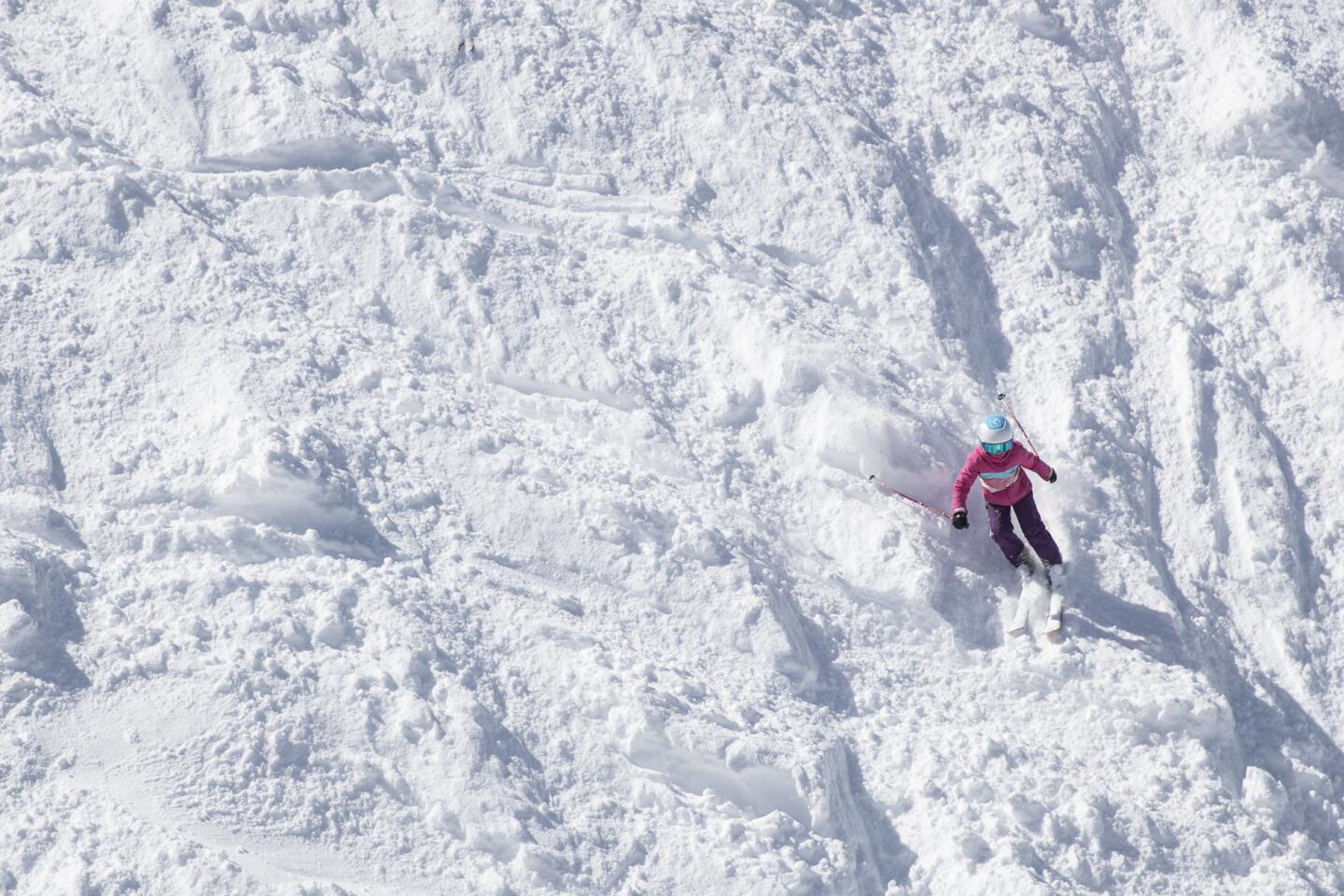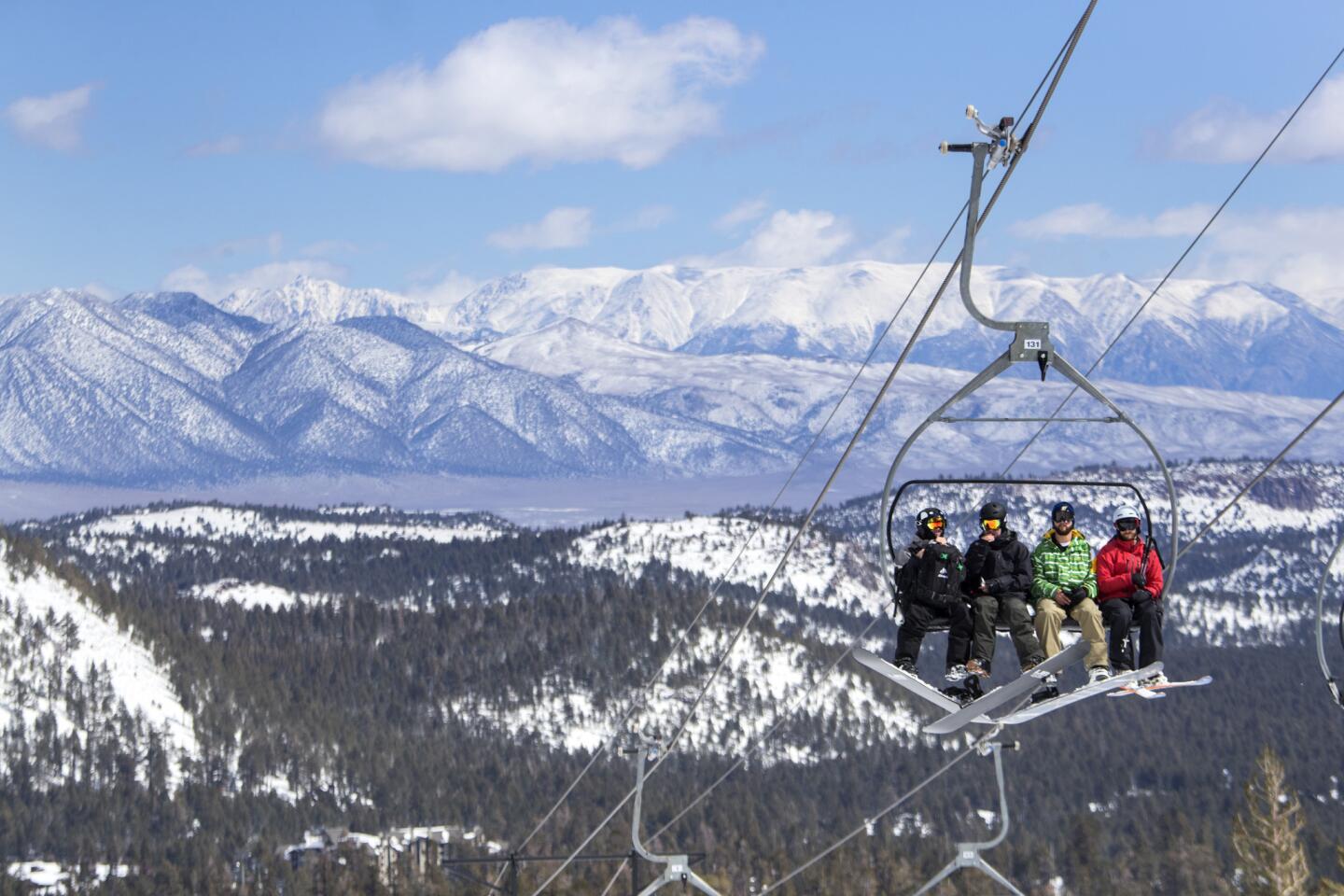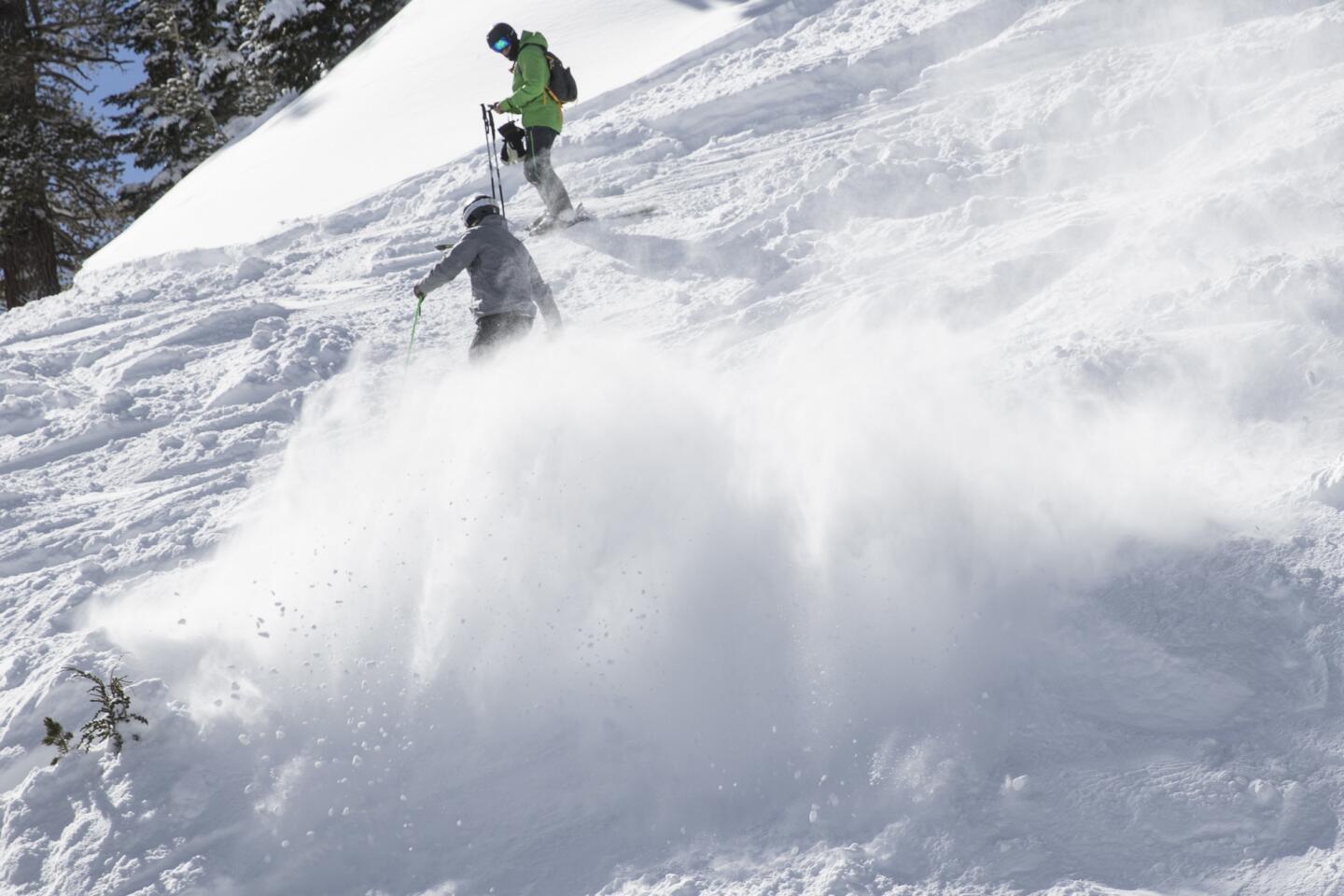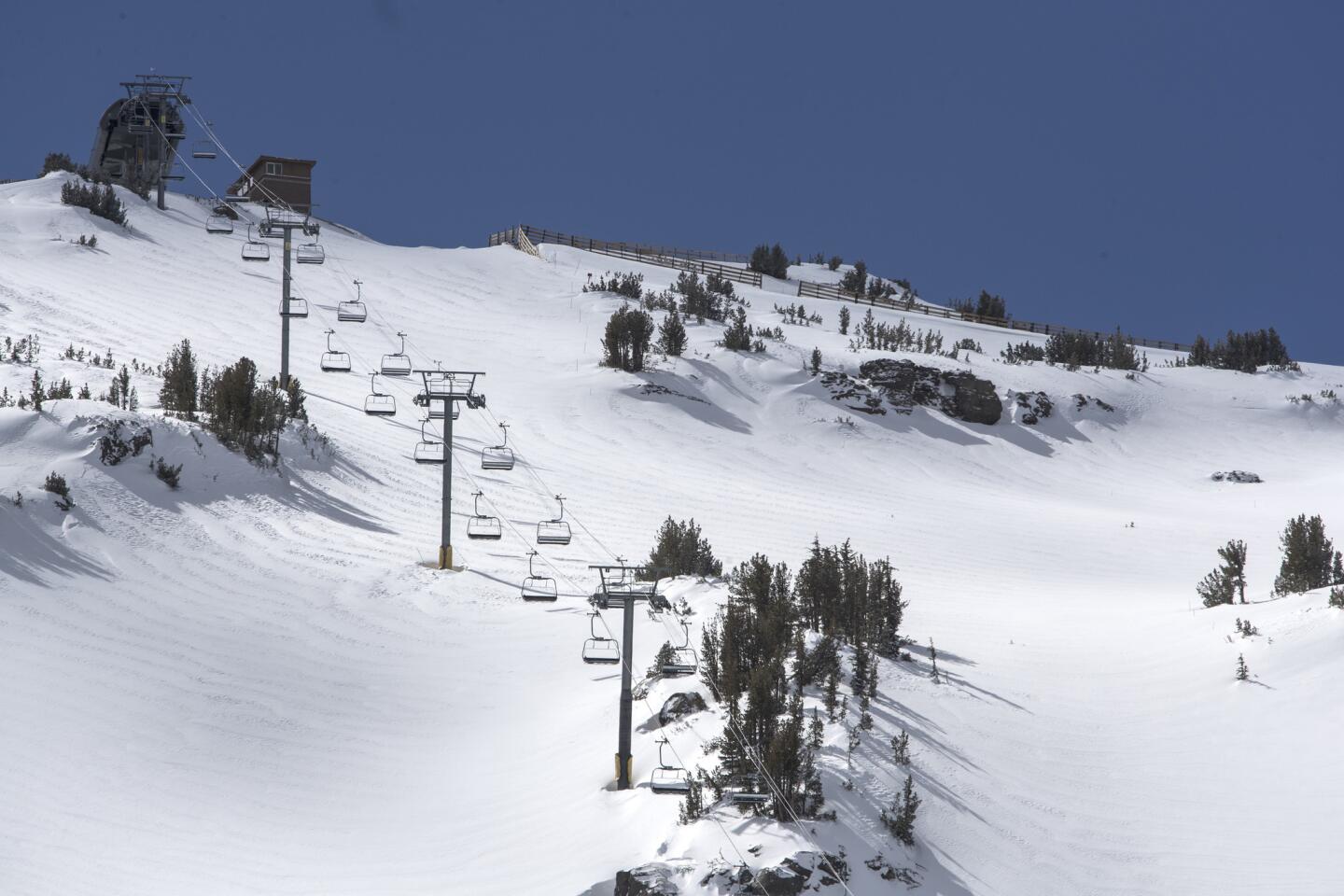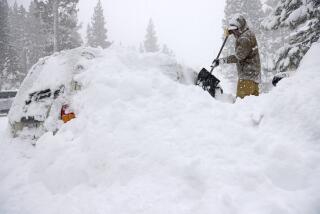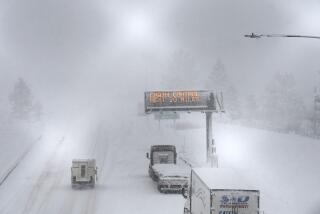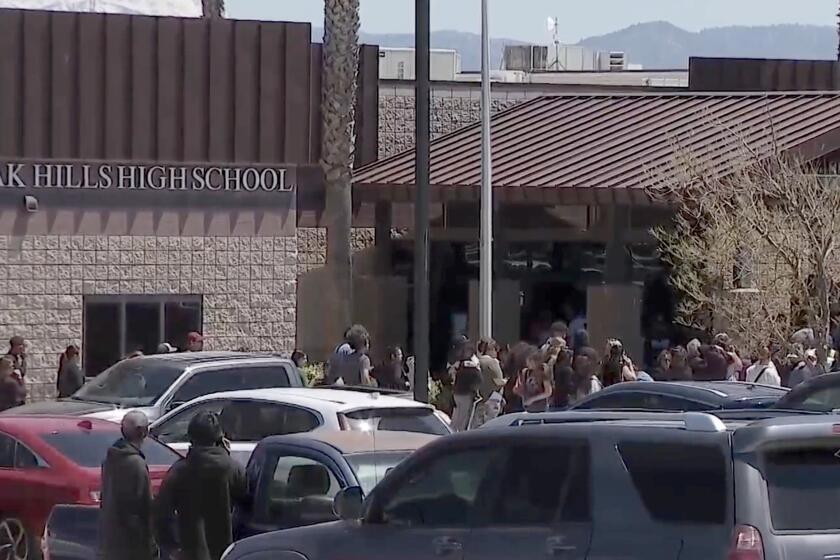Massive avalanche at Mammoth Mountain is a reminder of the danger lurking in the snow
One day after an avalanche roared down Mammoth Mountain, danger was hardly on the mind of snowboarder Caleb Hill as he carved through fresh powder under clear skies Sunday.
Like hordes of other visitors to the Sierra Nevada resort, Hill, 24, was undeterred by avalanches at two of California’s largest ski resorts that closed runs and triggered rescue operations in recent days. The Colorado native was more frustrated by the long lines and lift closures keeping him from the slopes as Mammoth reopened Sunday, saying the risk of an avalanche was a fact of life.
“It’s a reminder that just because you’re at a resort doesn’t mean you’re safe,” Hill said. “Powder is forgiving but it’s also dangerous.”
Hill had plenty of company in the snow-blanketed resort, which was busy with skiers and snowboarders eager to hit the slopes after being forced down from the mountain the day before. A storm dumped more than five feet of snow over the area, invigorating what had been a disappointing winter for California’s ski resorts.
Mammoth Mountain’s parking lots were full before 9 a.m. Sunday, while clusters of skiers and snowboarders waited at bus stops or trekked nearly half a mile with their equipment. At the Eagle Lodge, the line of people waiting to buy lift tickets snaked outside and around the domed building, many discussing the previous day’s avalanche with curiosity, but not concern.
Forecasters urged skiers to be more cautious than usual. An advisory posted by the Eastern Sierra Avalanche Center in Mammoth Lakes warned that considerable avalanche danger persisted Sunday “as the largest storm of the year has come to an end with well over five feet of new snow accumulation in some areas.”
The area where the avalanche occurred remained closed to visitors Sunday. A resort spokeswoman also said that the posted advisory was intended for backcountry skiers and snowboarders and does not necessarily apply to resort areas.
Mark Brownlie, president and operations chief of Mammoth Resorts, said a handful of internal investigators inspected the avalanche site Sunday morning. He said it’s unclear whether the resort’s efforts to prevent an avalanche may have led to it.
At 4:30 a.m. Saturday, work crews shot off two rounds from a 105-millimeter howitzer canon at a closed area near the top of the mountain to break up snowy overhangs that could give way, he said. Crews then used explosives to demolish dangerous snow piles when the avalanche hit about 10:15 a.m.
The slide was “very large” at the top of the mountain but dissipated as it neared the bottom, Brownlie said, creating a powder cloud of a couple feet before it came to a rest at the base of a chairlift called High Five Express.
Though the area where prevention crews were working was closed to skiers, six Mammoth employees at the lift “were partially caught, but freed themselves quickly, only suffering minor injuries,” a resort official reported Saturday. Two guests were also caught but also managed to free themselves.
All Mammoth personnel were accounted for within 12 minutes of the avalanche report, Brownlie said. Emergency operations were completed at 4:30 p.m.
The last time an avalanche of a similar magnitude occurred at Mammoth was in April 2006, Brownlie said. Three people were buried under snow but rescued without serious injuries. The last avalanche-related death occurred when a man hiked into a closed area of Mammoth Mountain in 1980.
Investigators are expected to wrap up their review in the next few days. It should detail the cause, size of the slide and the path it took, Brownlie said.
The incident at Mammoth Mountain came a day after another avalanche more than 100 miles away at Squaw Valley ensnared five people Friday afternoon, injuring two.
The resort had used explosives to knock down drifts of snow throughout the day Friday in an attempt to prevent a larger avalanche, but heavy snowfall continued, according to a Squaw Valley spokeswoman. She said the cause of the avalanche remains under investigation.
At Mammoth, Saturday’s lift closures, explosive booms and emergency operations alarmed some visitors who said they had trouble getting phone calls and texts to go through, and struggled to get information from resort staff on what exactly had happened as rumors swirled that people were trapped under the snow.
“It was kind of spooky because we didn’t know what was going on,” said Lindsay Wroe, 32, of Corona, who was visiting the resort and has skied at Mammoth a few times a year since she was a child. She was relieved when she learned the avalanche may have been triggered by the resort’s mitigation efforts rather than by nature.
“I know how rare an inbound avalanche really is,” Wroe said. “The fact that no one was injured made it easier on people, I think.”
Experts said the Saturday incident illustrates that avalanche mitigation remains an inexact science, with the explosions used to clear hazards sometimes sending snow running farther downhill than anticipated.
Such events are especially likely to happen after a big storm like the one that hit the Sierra Nevada over the last few days, depositing several feet of new snow on top of an older, icier layer, said Jordy Hendrikx, who directs the Snow & Avalanche Laboratory at Montana State University.
“The resort is trying to open as much of their terrain as safely and quickly as they can,” Hendrikx said. “In doing so, especially with these big events, sometimes things don’t go exactly as planned.”
Even under the most avalanche-prone conditions it’s much safer to ski at resorts that manage those hazards than in uncontrolled backcountry terrain, he added. But there are still risks.
“Any time you have an avalanche on an open ski area it is a concern because you potentially have people caught in there that may not be wearing an avalanche transceiver,” a beacon that can help authorities quickly find people buried under snow, Hendrikx said. “There’s only a short window of time; after about 15 minutes of being buried your survival chances are quite slim.”
Times staff writer Louis Sahagun contributed to this report.
More to Read
Start your day right
Sign up for Essential California for news, features and recommendations from the L.A. Times and beyond in your inbox six days a week.
You may occasionally receive promotional content from the Los Angeles Times.

